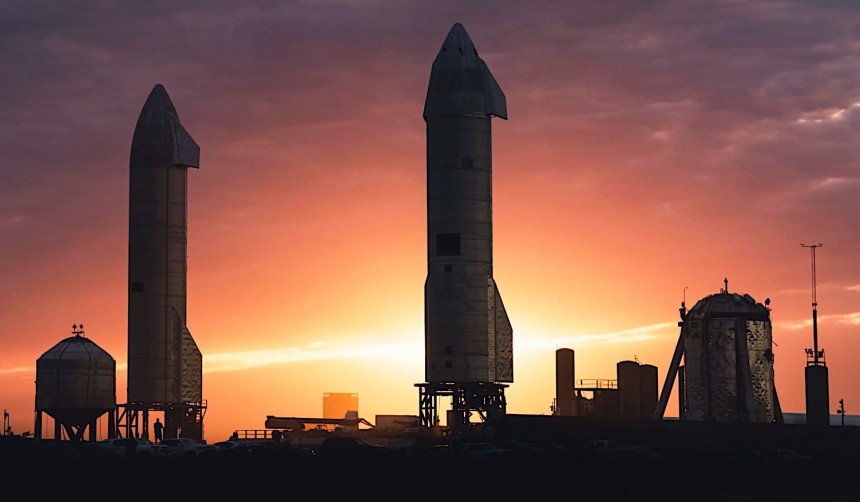It took close to two decades for a small company to grow into what may very well be considered the world’s first successful private space enterprise. Born in 2002, SpaceX is now a solid NASA partner, sending crews and supplies to the ISS, and planning to send missions to Mars before all others.
The thing that made the company so successful is its determination to make its crazy ideas work. Being private and all, profit is a great concern, and it was perhaps this drive to make a buck that gave birth to the extraordinary reusable rockets that have completely changed the face of space exploration.
Alongside rockets, SpaceX also developed spaceships, the kind meant to take people into space and bring them back to Earth, them too reusable and potent enough to allow the return of crewed space launches to American soil after a decade of relying on Russian help.
And now there are plans to create an even more extraordinary machine, the ultimate travel tool, capable of doing everything from delivering satellites into orbit to carrying humans to the planet of our dreams, and the ultimate destination of our immediate travel plans, Mars.
Enter the Starship.
For a while now, we’ve all watched with awe how SpaceX tried to get things right with prototype Starships. Awe because once they really make it work, this thing will probably change the world like no other object before it.
But let’s take things slow, and start with what the Starship is. As per SpaceX, we’re talking about the world’s most powerful launch vehicle ever developed, more powerful even than the soon-to-launch Space Launch System rocket. The name is a bit confusing though, as the term Starship is used to describe both the rocket and ship assembly, but also the spaceship itself.
When fully stacked, the monster should reach a height of 120 meters (394 feet), and its diameter should be 9 meters (30 feet). It comprises the core stage, which is the actual rocket, capable of delivering 72 MN (16 Mlbf) of thrust thanks to the Raptor engines and the fuel it uses (sub-cooled liquid methane and liquid oxygen), and the Starship itself, coming with a payload capacity of 1,100 cubic meters (38,800 cubic feet). That translates into a cargo capacity of 100 metric tons (220,000 pounds).
But perhaps the most striking thing about this is that the rocket (and the Starship it carries) can be used time and time again, thanks to that incredible ability of all things SpaceX to safely land on a pad somewhere.
This means the Starship will not only be suitable for sending humans and cargo into space, to whatever orbit or even planet, but it could also be used to transport people from one place to another here on Earth, at insanely fast speeds only ICBMs can achieve.
In theory, the Starship should be an all-in-one type of hardware. It could be used to deliver satellites “further and at a lower marginal cost per launch” than the Falcon rockets currently in use. These pieces of cargo could be even larger than what current rockets are capable of taking up, thanks to the increased space available.
For the needs of the International Space Station, the Starship could carry up supplies and experiments, but also crew.
Moving further out, the Starship could be used to transport people and supplies to the Moon but, most importantly, it could become the first spacecraft humans will be using to reach Mars in the not-so-distant future.
That sounds wonderful and all, but so far SpaceX has only prototype launches to show for. The first orbital flight of a prototype Starship is planned for the next few weeks, and that should open the doors for the ultimate test, a crewed flight to the Moon in 2023.
It is then when Japanese entrepreneur Yusaku Maezawa will likely become the most prominent member of the first civilian to go that far. The mission is called dearMoon, and is a planned three-week flyby of our planet’s natural satellite.
If that works, probably more such stunts will follow, and soon after the first human trip to the Moon.
You can read more about the Starship in the User Guide attached in the press release section below.
Alongside rockets, SpaceX also developed spaceships, the kind meant to take people into space and bring them back to Earth, them too reusable and potent enough to allow the return of crewed space launches to American soil after a decade of relying on Russian help.
And now there are plans to create an even more extraordinary machine, the ultimate travel tool, capable of doing everything from delivering satellites into orbit to carrying humans to the planet of our dreams, and the ultimate destination of our immediate travel plans, Mars.
Enter the Starship.
For a while now, we’ve all watched with awe how SpaceX tried to get things right with prototype Starships. Awe because once they really make it work, this thing will probably change the world like no other object before it.
When fully stacked, the monster should reach a height of 120 meters (394 feet), and its diameter should be 9 meters (30 feet). It comprises the core stage, which is the actual rocket, capable of delivering 72 MN (16 Mlbf) of thrust thanks to the Raptor engines and the fuel it uses (sub-cooled liquid methane and liquid oxygen), and the Starship itself, coming with a payload capacity of 1,100 cubic meters (38,800 cubic feet). That translates into a cargo capacity of 100 metric tons (220,000 pounds).
But perhaps the most striking thing about this is that the rocket (and the Starship it carries) can be used time and time again, thanks to that incredible ability of all things SpaceX to safely land on a pad somewhere.
This means the Starship will not only be suitable for sending humans and cargo into space, to whatever orbit or even planet, but it could also be used to transport people from one place to another here on Earth, at insanely fast speeds only ICBMs can achieve.
In theory, the Starship should be an all-in-one type of hardware. It could be used to deliver satellites “further and at a lower marginal cost per launch” than the Falcon rockets currently in use. These pieces of cargo could be even larger than what current rockets are capable of taking up, thanks to the increased space available.
Moving further out, the Starship could be used to transport people and supplies to the Moon but, most importantly, it could become the first spacecraft humans will be using to reach Mars in the not-so-distant future.
That sounds wonderful and all, but so far SpaceX has only prototype launches to show for. The first orbital flight of a prototype Starship is planned for the next few weeks, and that should open the doors for the ultimate test, a crewed flight to the Moon in 2023.
It is then when Japanese entrepreneur Yusaku Maezawa will likely become the most prominent member of the first civilian to go that far. The mission is called dearMoon, and is a planned three-week flyby of our planet’s natural satellite.
If that works, probably more such stunts will follow, and soon after the first human trip to the Moon.
You can read more about the Starship in the User Guide attached in the press release section below.


















